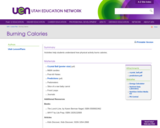
The activities in this lesson help students understand how physical activity burns calories.
- Subject:
- Life Science
- Mathematics
- Numbers and Operations
- Nutrition
- Material Type:
- Lesson Plan
- Provider:
- Utah Education Network
- Date Added:
- 07/14/2021

The activities in this lesson help students understand how physical activity burns calories.

The Virgin Islands Department of Education recognizes that literacy is a shared responsibility. In addition to aligning the Kallaloo Framework with the intent to infuse Virgin Islands History and Culture throughout the curriculum, VISA also recognizes the Common Core States Standards for Literacy in History/Social Studies, Science, and Technical Subjects. These content-specific literacy standards are based on the premise that students must learn to read, write, speak, listen, and use language effectively in a variety of content areas. To this end, the standards promote the literacy skills and concepts required for college and career readiness in multiple disciplines.
Beginning in grade 6, the literacy standards allow teachers of History/Social Studies, Science, and technical subjects to use their content area expertise to help students meet the particular challenges of reading, writing, speaking, listening, and language in their respective content. The ELA Literacy Standards are meant to supplement content standards in those areas, not replace them. To date, VIDE has determined that these standards must be intentionally incorporated into all content areas.
The ELA literacy standards are designed to prepare students for life outside the classroom. They include critical-thinking skills and the ability to closely and attentively read texts in a way that will help them understand and enjoy complex works of literature. Students will learn to use cogent reasoning and evidence collection skills that are essential for success in college, career, and life. The standards also lay out a vision of what it means to be a literate person who is prepared for success in the 21st century

Submitted as part of the California Learning Resource Network (CLRN) Phase 3 Digital Textbook Initiative (CA DTI3), CK-12 Foundation’s high school Biology FlexBook covers cell biology, genetics, evolution, ecology, botany, zoology, and physiology. This digital textbook was reviewed for its alignment with California content standards.
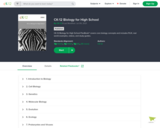
CK-12 Biology for High School FlexBook® covers core biology concepts and includes PLIX, real world examples, videos, and study guides.
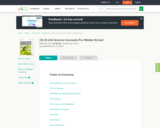
CK-12’s Life Science delivers a full course of study in the life sciences for the middle school student, relating an understanding of the history, disciplines, tools, and modern techniques of science to the exploration of cell biology, molecular biology, genetics, evolution, prokaryotes, protists,fungi, plants, animals, invertebrates, vertebrates, human biology, and ecology. This digital textbook was reviewed for its alignment with California content standards.
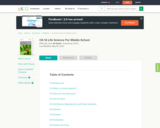
CK-12’s Life Science delivers a full course of study in the life sciences for the middle school student, relating an understanding of the history, disciplines, tools, and modern techniques of science to the exploration of cell biology, genetics, evolution, prokaryotes, protists, fungi, plants, the animal kingdom, the human body, and ecology. This digital textbook was reviewed for its alignment with California content standards.
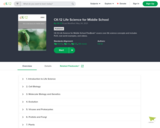
CK-12 Life Science for Middle School FlexBook® covers core life science concepts and includes PLIX, real world examples, and videos.
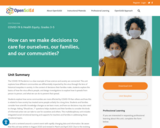
The COVID-19 Pandemic is a clear example of how science and society are connected. This unit explores how different communities are differentially impacted by the virus through the lens of historical inequities in society. In the context of decisions their families make, students explore the basics of how the virus affects people, and design investigations to explore how it spreads from person to person, and what we can do to prevent that spread.
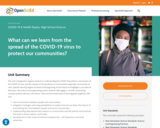
This unit is designed to support students in understanding the COVID-19 pandemic, transmission of the COVID-19 virus, and the impacts of the pandemic on communities, especially communities of color. Specific learning targets are listed at the beginning of each lesson and highlight a core idea for the lesson, the science and engineering practice students will engage in, and the crosscutting concept students will use in the lesson. i
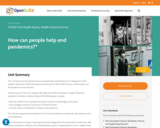
The unit focuses on the question How can people help end pandemics? It is designed to teach students about the COVID-19 pandemic, transmission of the COVID-19 virus, and the impacts of the pandemic on communities. Over the course of the unit, students will study the COVID-19 pandemic in light of historical pandemics to build an understanding of the following key concepts:
• How the COVID-19 virus spreads from person to person and through communities,
• How strategies to reduce transmission of COVID-19 work,
• How the actions of individuals can help to end pandemics.
The unit also supports the development of two social emotional competencies: self awareness and social awareness.
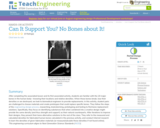
After completing the associated lesson and its first associated activity, students are familiar with the 20 major bones in the human body knowing their locations and relative densities. When those bones break, lose their densities or are destroyed, we look to biomedical engineers to provide replacements. In this activity, student pairs are challenged to choose materials and create prototypes that could replace specific bones. They follow the steps of the engineering design process, researching, brainstorming, prototyping and testing to find bone replacement solutions. Specifically, they focus on identifying substances that when combined into a creative design might provide the same density (and thus strength and support) as their natural counterparts. After iterations to improve their designs, they present their bone alternative solutions to the rest of the class. They refer to the measured and calculated densities for fabricated human bones calculated in the previous activity, and conduct Internet research to learn the densities of given fabrication materials (or measure/calculate those densities if not found online).

Learn about one town's conflict over the issue of spraying pesticides to combat disease-carrying insects, in this video segment from Greater Boston.

In this video segment adapted from NOVA scienceNOW, scientists discuss a family of genes called FOXO that can significantly extend life span in worms—and in humans.
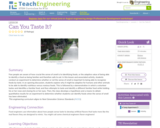
Few people are aware of how crucial the sense of smell is to identifying foods, or the adaptive value of being able to identify a food as being familiar and therefore safe to eat. In this lesson and activity, students conduct an experiment to determine whether or not the sense of smell is important to being able to recognize foods by taste. The teacher leads a discussion that allows students to explore why it might be adaptive for humans and other animals to be able to identify nutritious versus noxious foods. This is followed by a demonstration in which a volunteer tastes and identifies a familiar food, and then attempts to taste and identify a different familiar food while holding his or her nose and closing his or her eyes. Then, the class develops a hypothesis and a means to obtain quantitative results for an experiment to determine whether students can identify foods when the sense of smell has been eliminated.

An introduction to what cancer is and how it is the by-product of broken DNA replication.
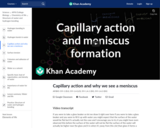
How capillary action and the meniscus are related to intermolecular forces in water.
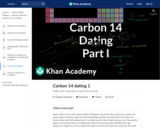
Introduction to carbon 14 and using it to date fossils.

In this video segment adapted from NOVA, find out how cars made of a material stronger than steel and half the weight can help combat climate change.
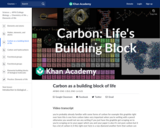
Introduction to carbon as a building block of life.

In this media-rich lesson, students explore careers in science through profiles of Alaska Native scientists. They consider how traditional ways of knowing and Western approaches to science can complement each other and allow students to incorporate their own interests when considering careers in science.